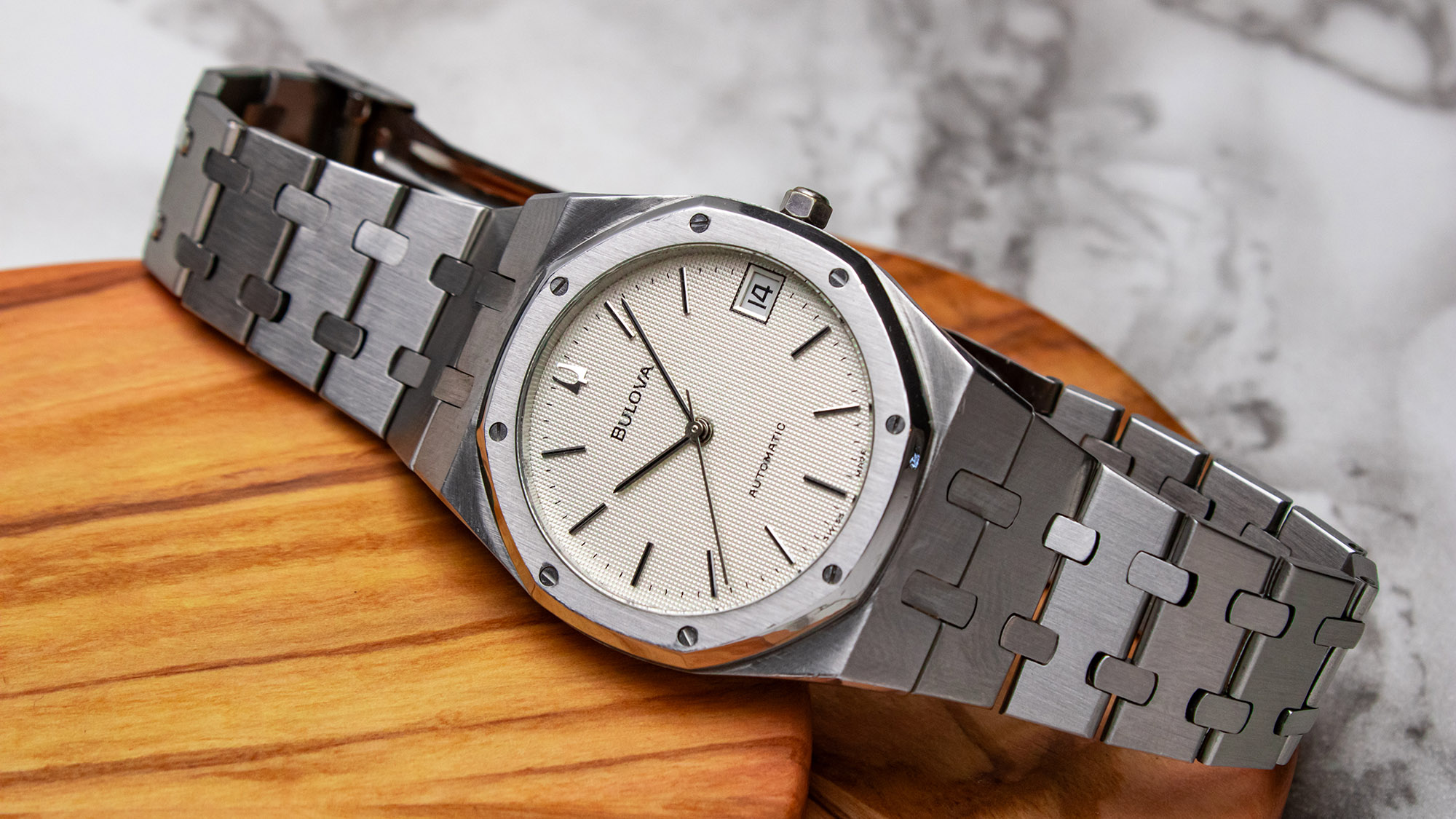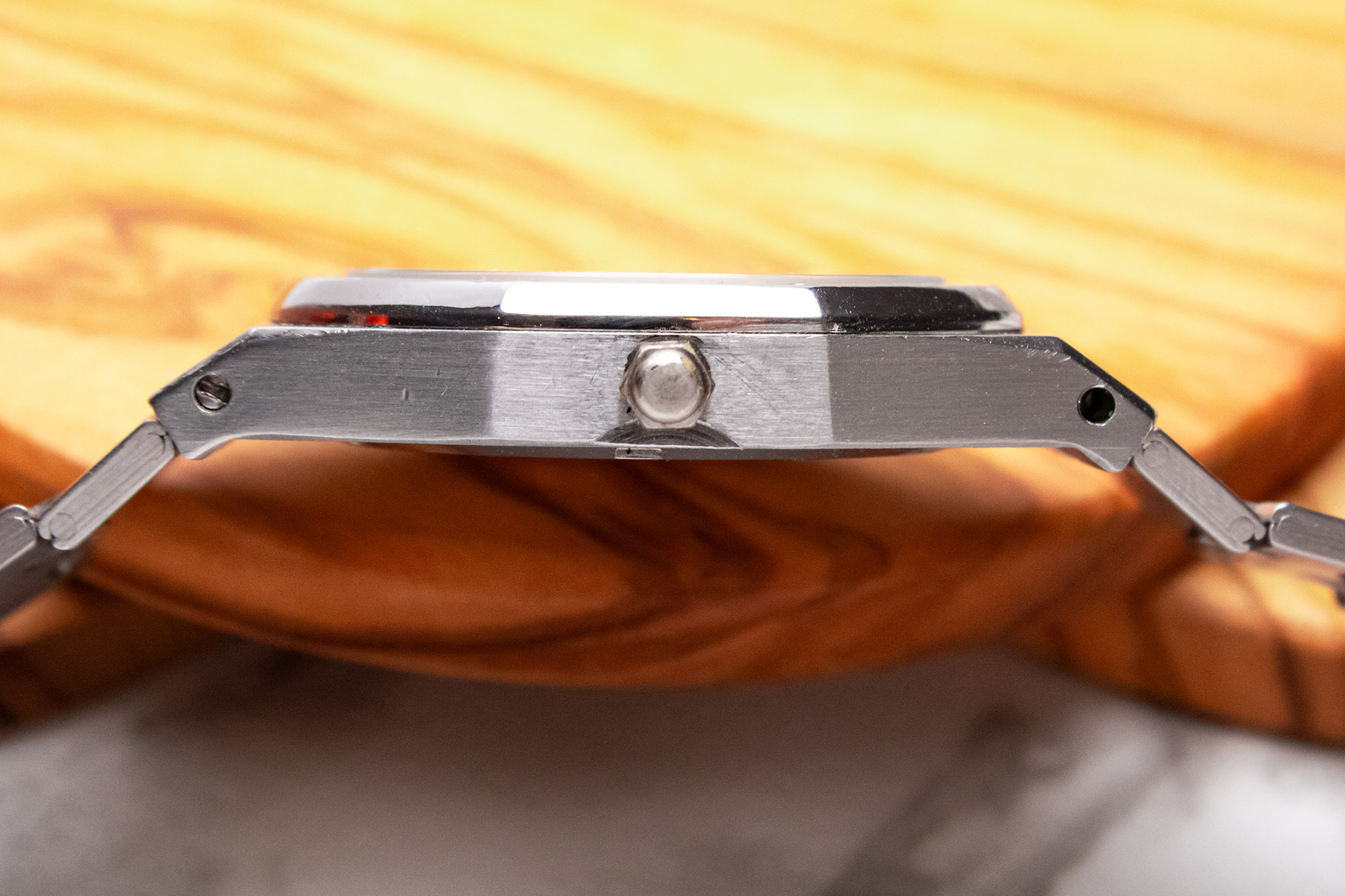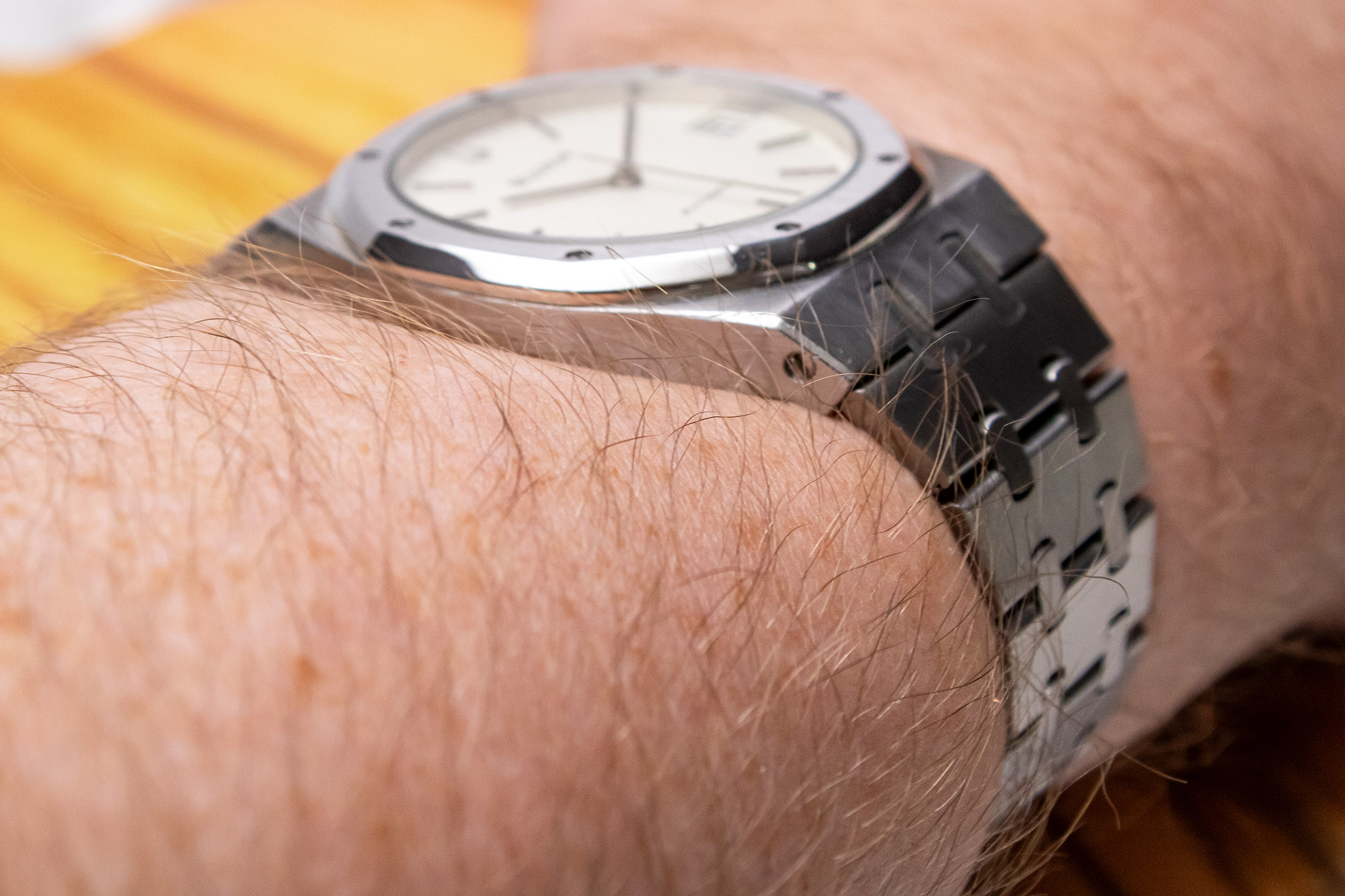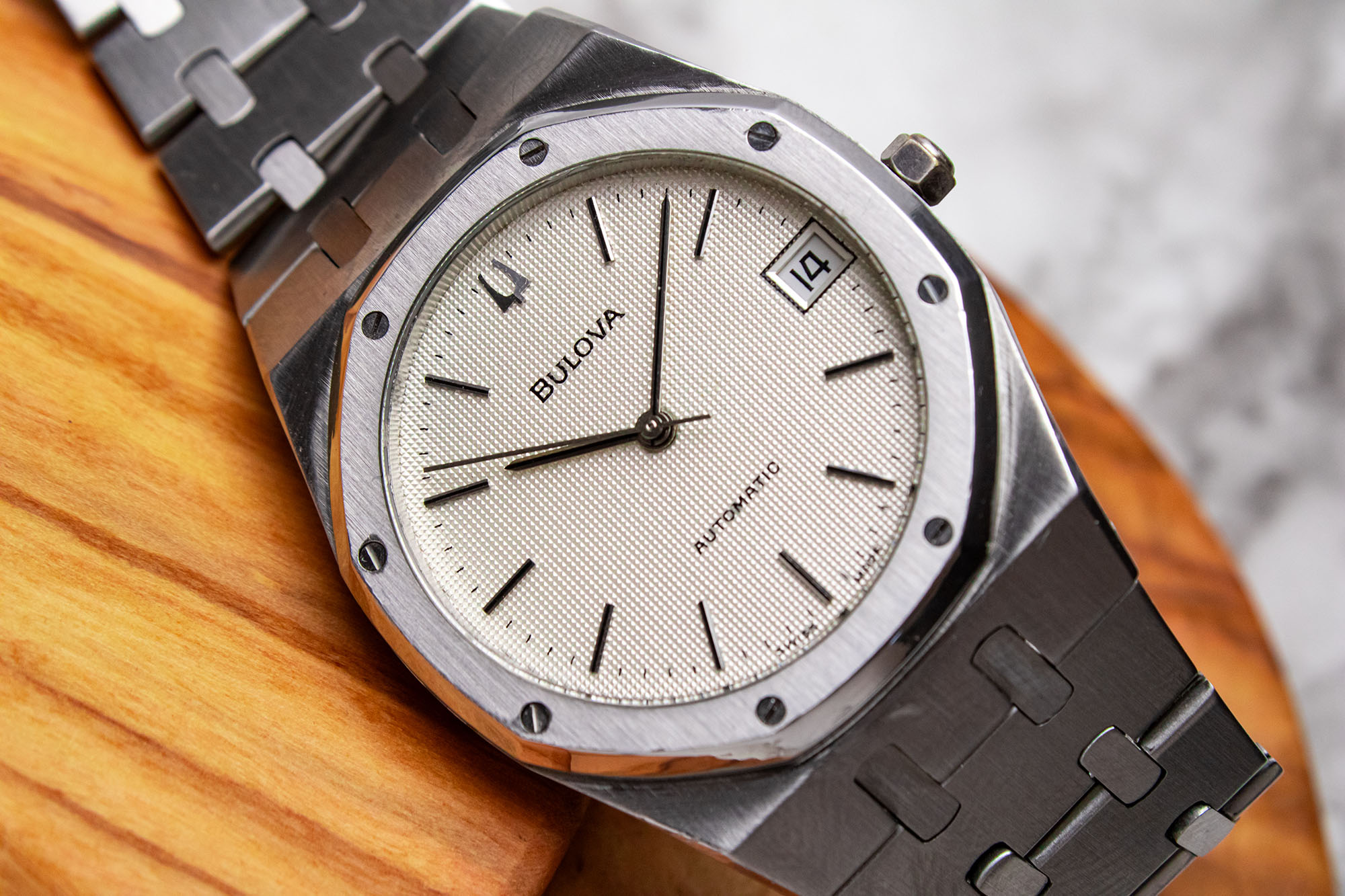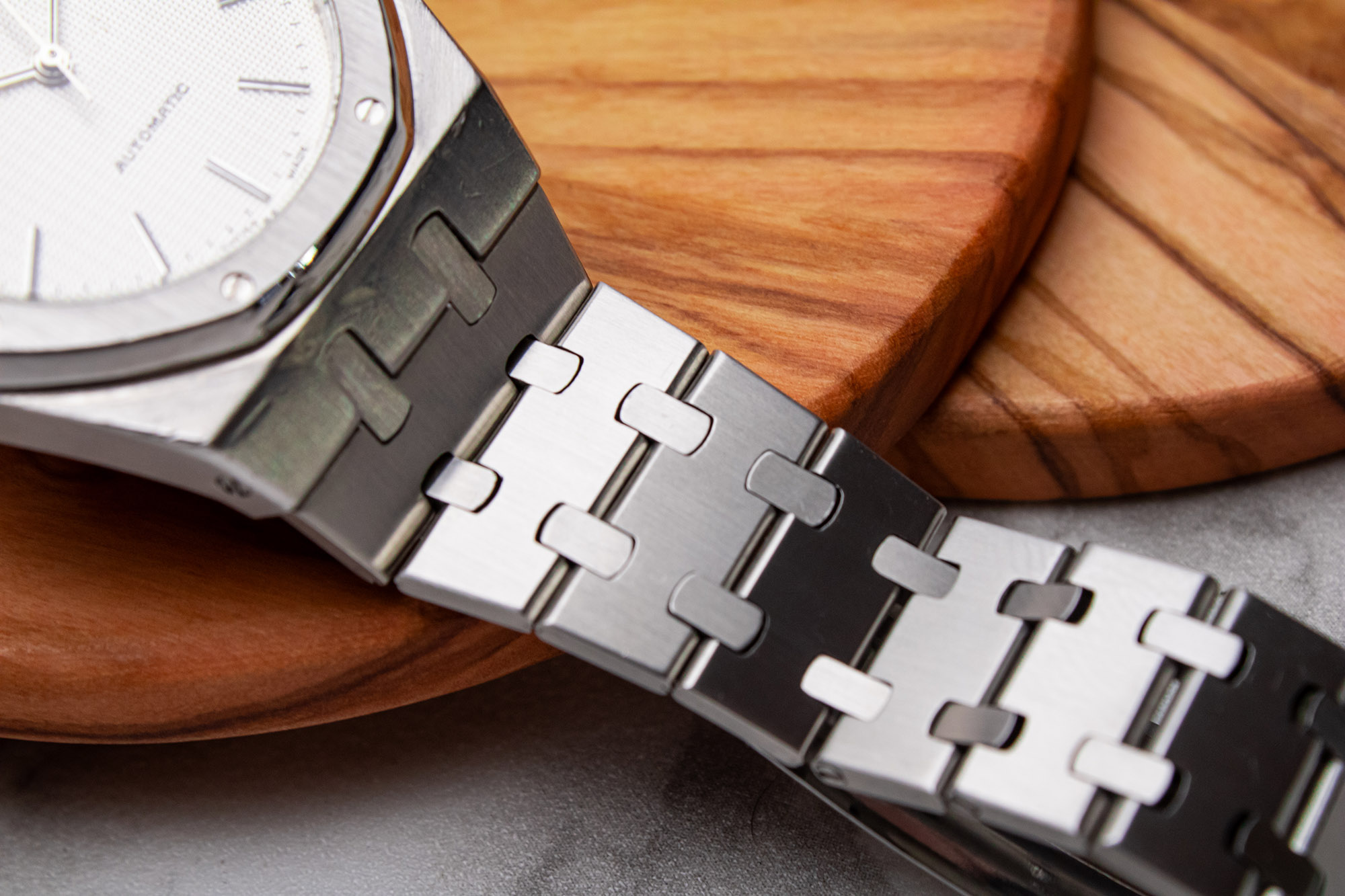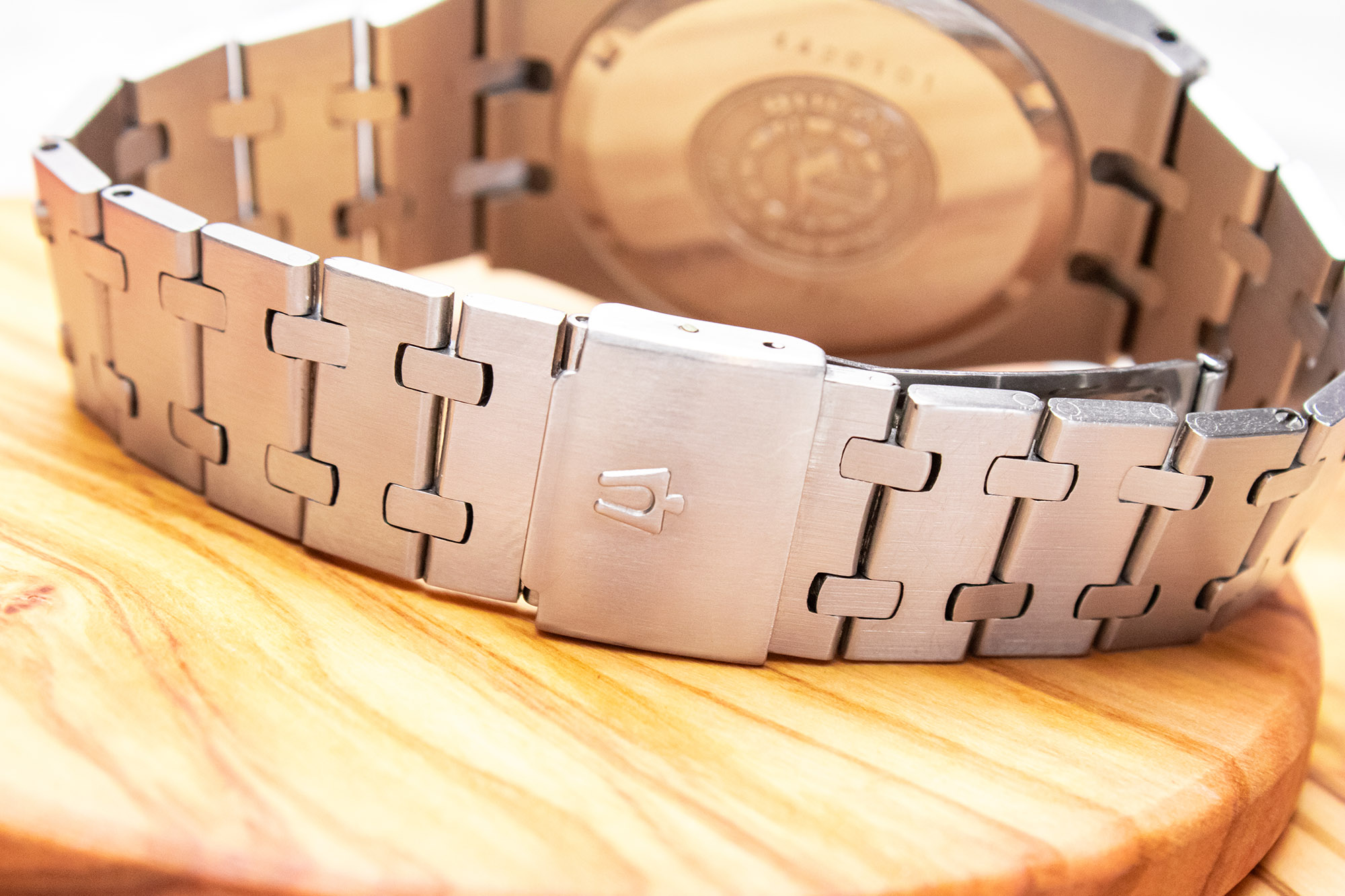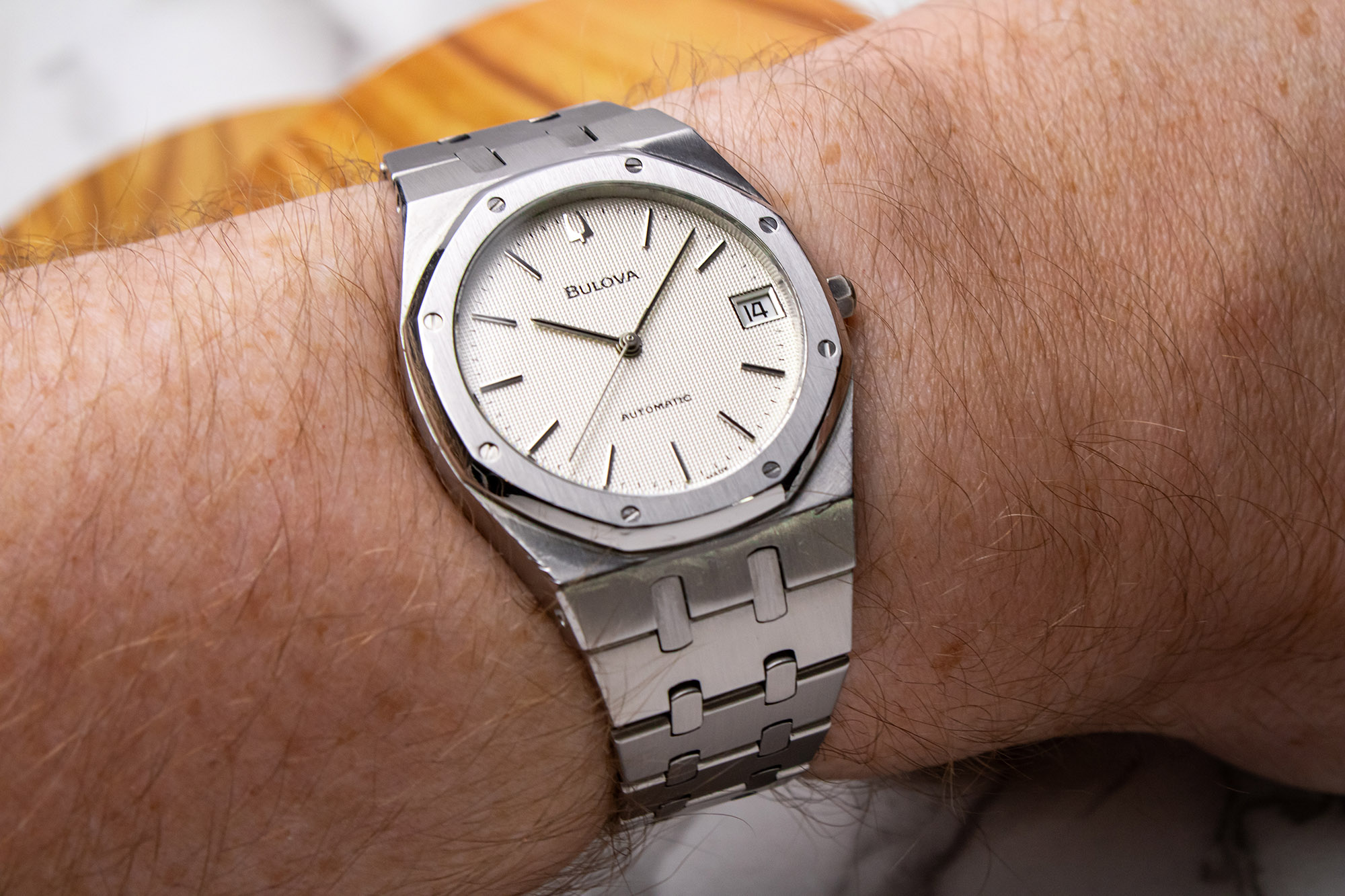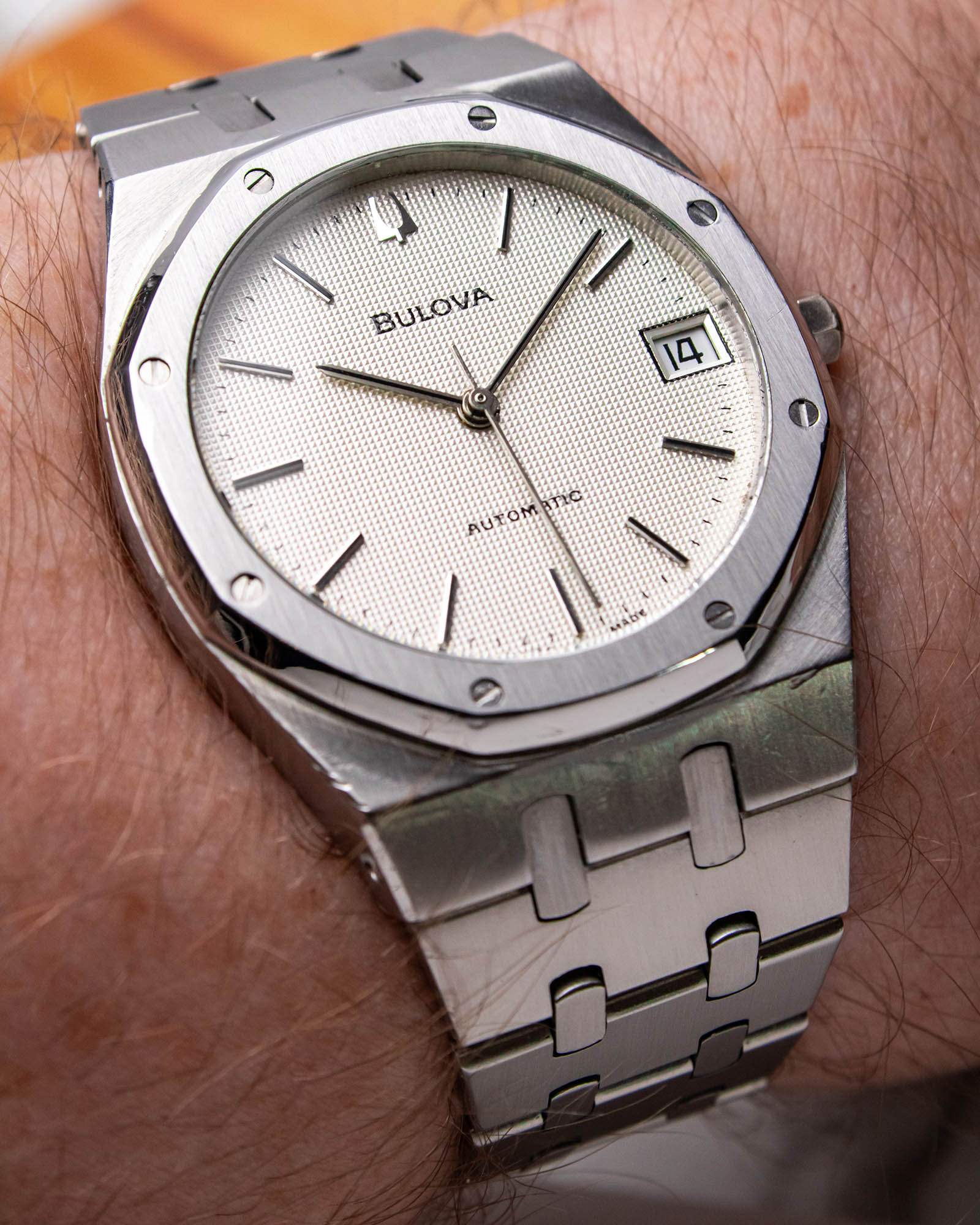
The Audemars Piguet Royal Oak is a nigh-on sacred institution in the modern watch enthusiast community. The story of its creation in 1972 to save the brand from the ravages of the Quartz Crisis is one of the best-known stories in watchmaking, and its status as the most expensive steel watch ever made at the time of its release is the stuff of legends. Gérald Genta, the designer behind the Royal Oak, has become a legend in his own right, standing as the most (and arguably only) famous watch designer of all time. With the reverence and mystique surrounding the Royal Oak today, it’s unsurprising that anything that impinges upon the series can be treated almost like heresy by portions of the community. Back in the late ‘70s, however, this icon spawned a lesser-known, hotly debated counterpart that still inspires controversy in collecting circles to this day – the Bulova reference 4420101 “Royal Oak.” Over the years, this short-lived Bulova collection has developed its own unique mythology, grown a dedicated fanbase, and created a more accessible, conversation-starting entry point into one of the most sought-after silhouettes in horology.

What truly makes the Bulova Royal Oak interesting is that this watch is not as cut-and-dried as a simple homage. In the late ‘60s, before he went to Audemars Piguet to design the Royal Oak, Gérald Genta worked as a designer for Bulova for several years. Because of this, there have been numerous claims over the years that Genta originally offered the instantly recognizable design to Bulova, but the brand passed it up before dusting off the blueprints after Audemars Piguet had made it a success. Unfortunately, this version of the story is likely apocryphal, with very little supporting evidence and a somewhat inconsistent timeline. Even early Royal Oak design drawings are clearly marked with the Audemars Piguet name, but the story becomes less clear-cut when looking at the Bulova Royal Oak itself. This is not an exact, one-to-one copy of the contemporary Audemars Piguet, and in many of the fine details the Bulova bears a closer resemblance to pre-production sketches (sketches that would not be seen by the general public for decades) of the Royal Oak than to the models that made it to market. In addition, it’s worth noting that the watch industry at the time of the Bulova Royal Oak was very different to today. So-called homage watches were far more commonplace, even among well-respected major brands – as an example, Seiko, Rado, Bulova, and several other high-profile watchmakers produced more-or-less exact visual copies of the Rolex Datejust for decades without serious community backlash.
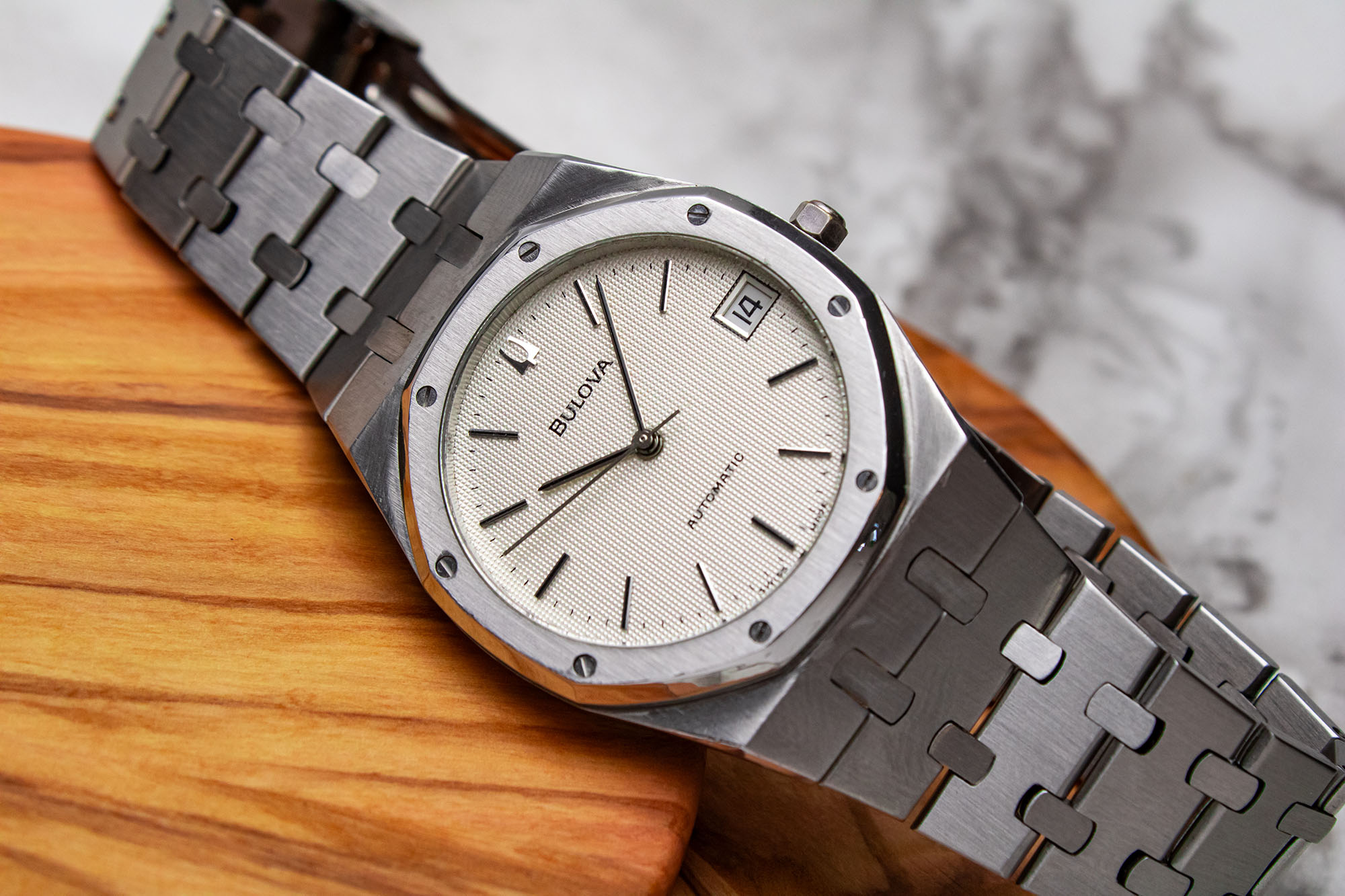
Regardless of the true history behind the Bulova Royal Oak, it’s a deeply compelling watch on the wrist. Produced from 1976 to 1982, the series offered a solid array of variants, including black, silver, and gold dials, quartz and mechanical movement options, and even a bold, fully gold-plated model. This circa 1979 model is a gently aged example, with a stainless steel case measuring in at 36mm wide. At first glance, this case might seem identical to ‘70s-era Audemars Piguet models. The brushed and polished octagonal bezel, the trim, lightly chamfered case sides, and even the slightly undersized hexagonal crown should all feel intimately familiar to most enthusiasts. Dig a little deeper, however, and the differences begin to reveal themselves. The bezel is a prime example of these subtle alterations. For a start, it’s markedly narrower than AP’s bezel design, giving the watch a more open, airy, all-dial feel. Furthermore, the eight screws atop the bezel are round, rather than the more familiar and dramatic hexagonal screws. Although this is certainly a more practical choice, these screws are still strictly decorative. More case design tweaks arrive through the integrated lugs. Compared to the more familiar AP layout, Bulova’s integrated bracelet links sit far closer together, with each of the twin oval center links sitting fully inboard of the center line of the bezel screws. This in turn helps to visually emphasize the Bulova’s more pronounced bracelet taper, which gives the watch a larger, more eye-catching wrist presence than the numbers might suggest. Of course, when directly comparing this Bulova to the far more expensive AP, there are going to be differences in finishing, and the bracelet is where this difference is starkest. Rather than the meticulously chamfered, individually polished edges surrounding each link of the AP bracelet, Bulova instead opts for simpler rounded link edges that still catch the light handsomely. On the wrist, the Bulova Royal Oak is lightweight, comfortable, refined, and surprisingly slim, but it manages this elegantly slender stance without the use of an exotic in-house movement.
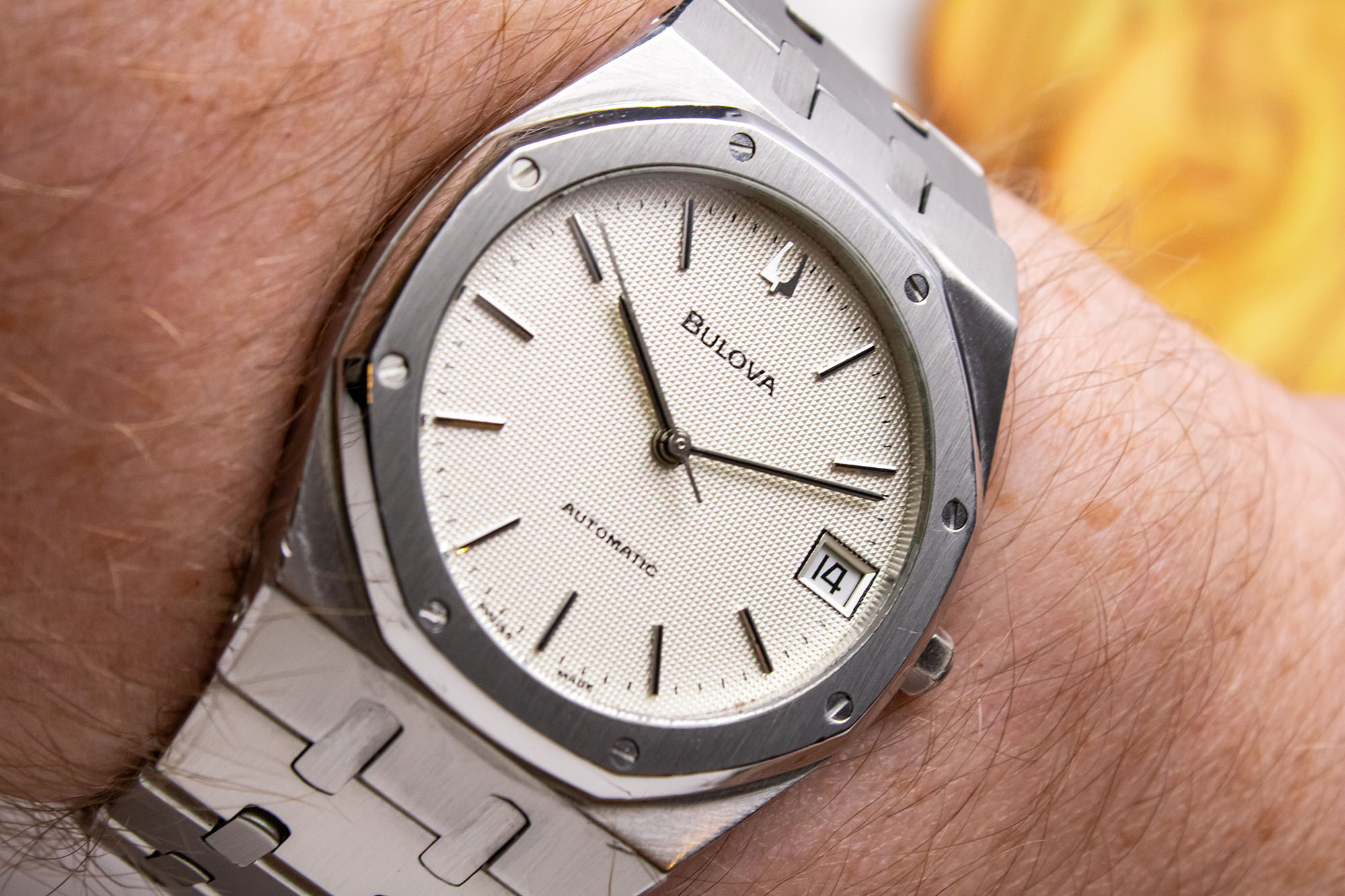
Like the case, the Bulova Royal Oak’s dial is a slimmer, simpler twist on familiar themes. Rather than the famous, intricate tapisserie guilloche dial pattern, Bulova instead equips its Royal Oak with tighter, smaller clous de Paris engraving. When combined with the warm silver base dial hue, this micro-scale pyramidal texture creates a shimmering, almost satiny effect in changing light. Simple black-lined polished stick hands and matching applied rectangular indices complete this handsomely restrained layout, while a faceted applied Bulova tuning fork emblem at 12 o’clock adds just a touch of flash. Dial text is kept to an absolute minimum, but the print quality on this complex surface is exquisite even under high magnification.
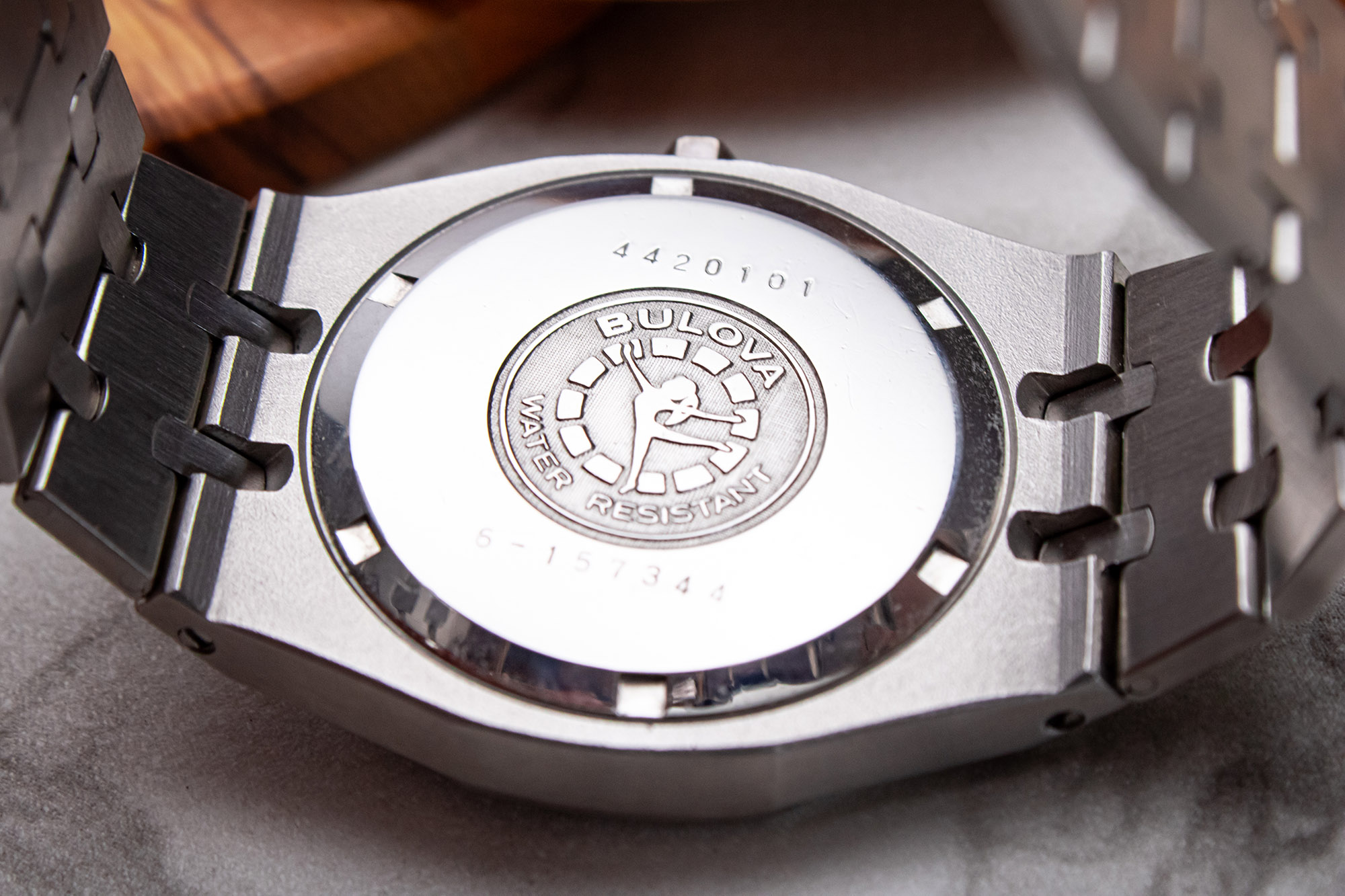
While Bulova would offer several variants of its Royal Oak with quartz options, this particular model is powered by a familiar ETA 2892 automatic movement. With a lineage beginning in the ‘70s and modernized versions still in production today, the 2892 is a smooth, reliable, and compact powerplant. Having such a long-running, prolific movement inside helps to keep the Bulova Royal Oak easy to service and repair, further democratizing the vintage Royal Oak look for the average enthusiast.
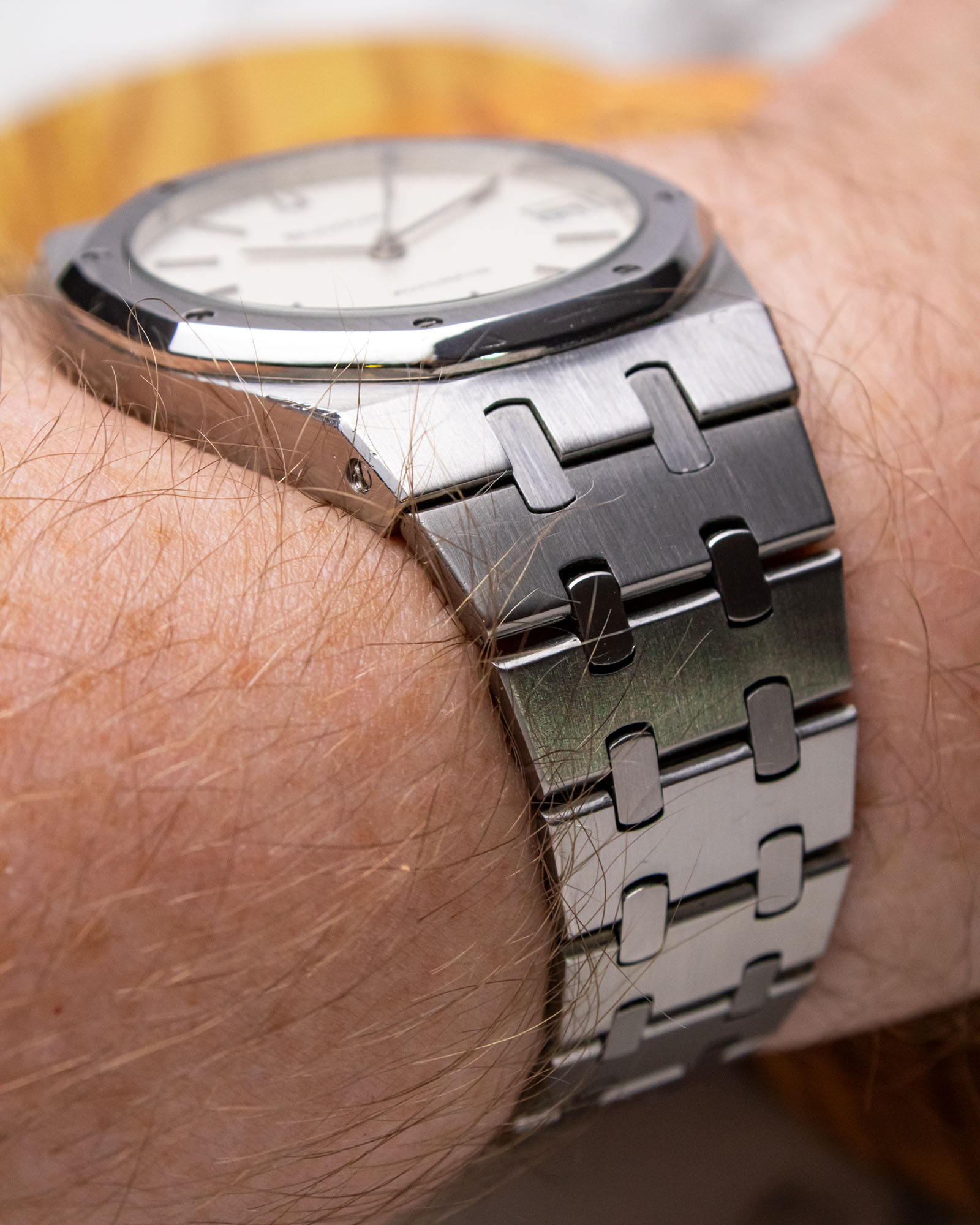
For some enthusiasts, the idea that another brand sold a highly similar design to the vaunted Audemars Piguet Royal Oak will always be a source of pearl-clutching outrage. Despite its murky, controversial origins, however, the Bulova Royal Oak series is an attractive statement on the power of making beloved ultra-luxury designs available to a more mass-market audience, complete with its own unique heritage and story to tell. While AP’s Royal Oak – especially early production ‘70s-era examples – will likely forever remain out of financial reach for the majority of enthusiasts, the Bulova Royal Oak gives a compelling taste of vintage Royal Oak ownership for between $1,500 USD and $4,000 USD in the current market. Beyond this, the Bulova Royal Oak stands as a handsome reminder to look past knee-jerk controversy and form one’s own opinions on watches.

